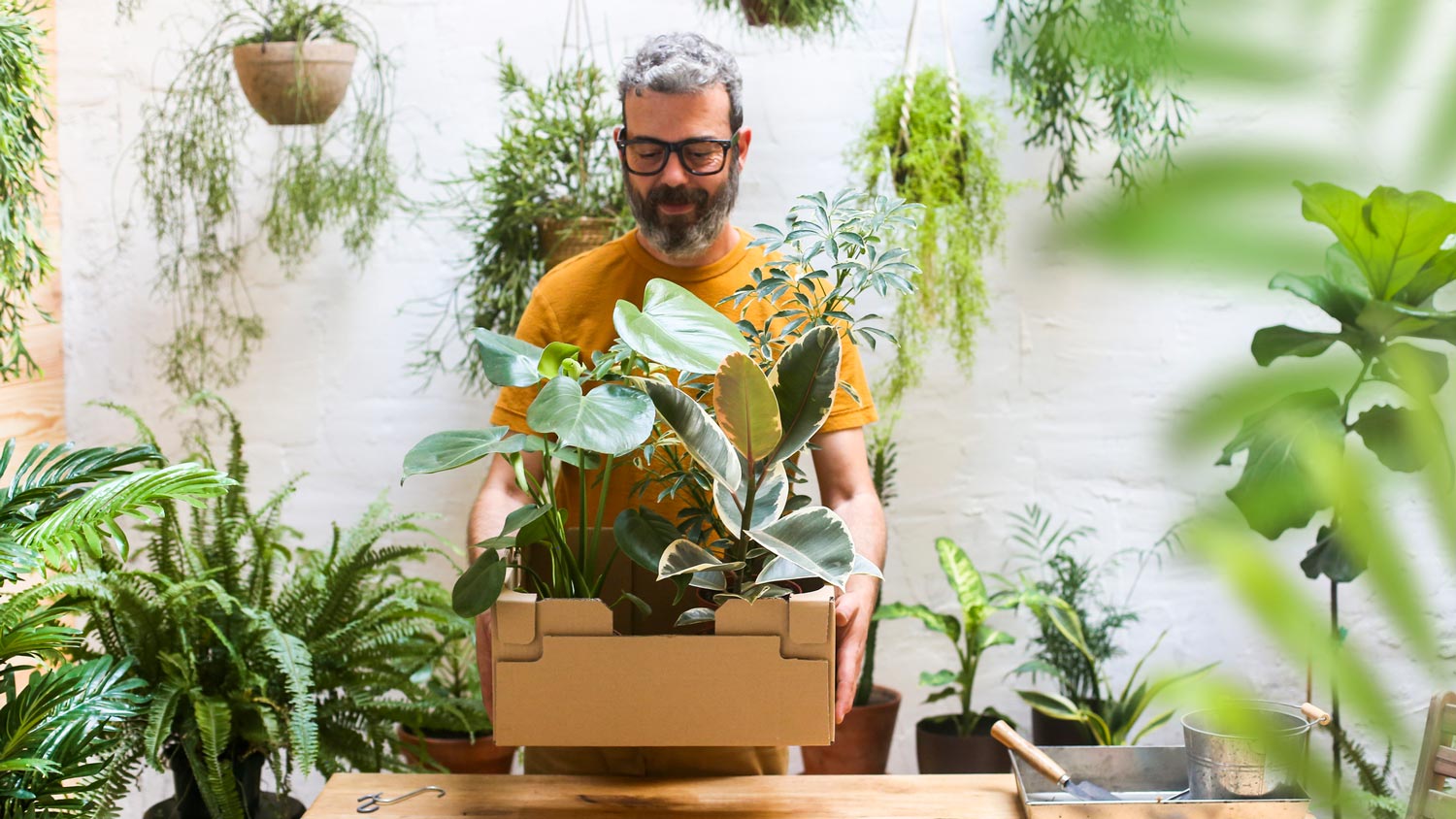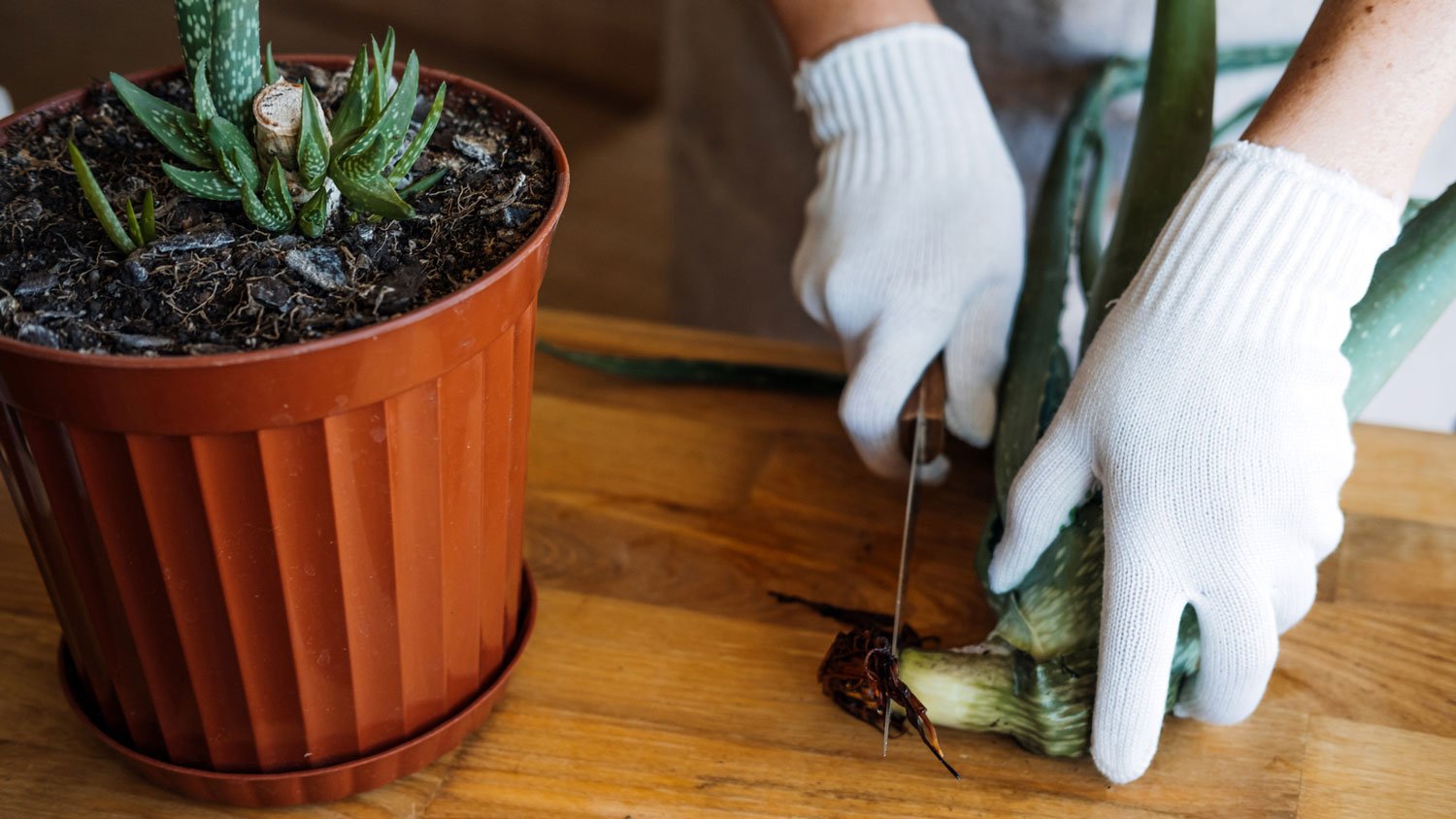How to Pack Plants for Moving: A Step-by-Step Guide
Your houseplants only need a little love and attention to make it through a move


If you’re a plant parent, your new house won’t feel like a home without your houseplants. Learning how to pack plants can be a delicate task, and if you’re using a professional moving company near you, some of them won't move live plants.
If you want your leafy babies to come with you, it’s going to take a bit of planning to get the plants packed right. Here’s our guide to plant packing that will ensure your houseplants arrive in one piece.
How to Prepare Your Plants for the Move
The first step is to prep your plants before the move. Plants take time to transition, so start this process about three weeks before moving day.
Three weeks before moving day: Repot plants from clay pots into plastic pots of the same size. Wrap original pots with bubble wrap or packing paper to use in your new home.
Two weeks before moving day: Prune plants by removing dead leaves, limbs, and flowers with sharp scissors.
Three days before moving day: Water your plants, but be careful not to overwater them. Too much water can cause the soil to freeze in cold weather or promote fungus growth in warm weather.
How to Pack Your Plants for Moving
1. Collect the Necessary Packing Supplies
Now that you have prepared your plants for travel, it’s time to collect packing supplies to help you move plants efficiently.
Collect the following moving supplies:
Wrapping paper
Bubble wrap
Spray bottle
Plastic bags
Paper towels
Moving boxes (depending on the number and size of the plants)
2. Cover the Soil
When moving day comes, how you pack your plants will ensure they safely arrive at their new home without wilting or breaking.
Start by packing your pot inside a plastic bag, tie it on top, and tape it at the base of the plant to keep the soil contained. This step will prevent soil from spilling into your vehicle and making a mess.
3. Pack Plants in Boxes

Once the soil is secure, it’s time to place each plant in moving boxes. Choose a box that can comfortably carry your plant. Large plans require their own box, while small plants can all fit into one box.
Follow these guidelines when packing your plant boxes:
1, Secure the base: Tape the bottom of the box, so there's minimal risk of the pot falling through.
2, Fill in spaces: Fill in the extra space around the pot and the plant with packing paper or newspaper, so it's secure but can also breathe.
3. Keep it open: Only the plant base needs to fit in the box, especially if you're transporting your plants in your own vehicle. You don’t need to seal the boxes.
4. Label it: Whether you decide to close the box or not, make sure you label the box “live plant,” “up,” and “fragile” to keep it upright throughout the trip.
4. Add Layers of Protection During a Winter Move
If you’re moving in the winter, wrap the exposed parts of your plant in newspaper or packing paper for an added layer of protection from the winds and freezing temps to save plants from frostbite. Don’t pack plants into the trunk. Bring your plants into the car where air circulates better.
If you’re moving during the summer, keep your plants out of direct sunlight, water them well, and give them some cooling air conditioning in the car.
No matter the season, if the temperature is drastically changing, never leave a plant in the car overnight. Take your plants with you to protect them from being exposed to temperature changes.
5. Protect Plants During the Drive
Now that you have packed all your plants properly, it’s time to load them into your moving vehicle. The easiest and best method for transporting plants is to move them in your vehicle or the cab of the moving truck. Here are a few things to keep in mind during your drive.
Environmental Control
Extreme temperatures can harm your plants. But when you transport plants in your car (not the trunk), plants will have access to sunlight, and you can control the temperature to keep them at a comfortable temperature.
Be Mindful During Transit
Moving plants yourself will allow you to care for them during the drive. Check on them throughout the journey. Make sure the plants are always upright, check if they need watering, temperature change, less or more light.
6. Unpack Plants Quickly
Once you arrive in your new home, resetting your plants should be one of your top priorities. Be sure to get your plants back in the same condition they were in at your previous home.
Follow these guidelines for best results:
Unpack: Immediately remove your plants from the vehicle and give them water if needed.
Place: Return plants to their original pots, and place them somewhere where they’ll receive the proper light for their type.
Give your plant time to adjust: If your plant suffers from transplant shock, give it a few days to recover.
How to Move Large Plants
When moving larger plants, you’ll want to take similar steps as you would with smaller plants.
Start by covering the soil either with a plastic bag or by taping cardboard pieces over it to avoid spills during the move.
You can also place sphagnum moss in the pot and cover it with plastic wrap.
Taller plants can be titled, loaded on their side, or slightly uprooted. However, you’ll want to replant them once the plants settle in their new space.
Additional Plant Moving Tips
When moving with your leaf babies, you need to keep a few additional points in mind.
Consider the Weather
If the new state has a different climate, it’s a good idea to check growing conditions ahead of your move. This step will help you alter your plant’s care routine accordingly.
Plant Regulations
Look up plants regulations for your new state (and all states you’re crossing through) since each state has different guidelines for importing plants, some of which have stricter regulations than others.
Consider Distance and Time
Traveling with plants is relatively easy if you’ll only be on the road for a few days. If you’re traveling for more than two weeks, you may want to reduce the number of moving plants as you’ll be taking them in and out at each overnight stop, especially if you’re traveling in extreme weather conditions.
Consider Making a Stem Cutting

If one of the plants is too big to move in a box, you can take a cutting and regrow it in your home. A plant cutting is a piece of the healthy plant that you remove to propagate a new plant. Just double-check whether it’s possible to regrow that type of plant from a cutting.
Transporting the cutting itself is much simpler than transporting the plant. Wrap it in a moist paper towel and secure it in a plastic bag or container so it stays sealed throughout the transit. Be sure to propagate the cutting as soon as you arrive at your new home.
Frequently Asked Questions
Yes, you can take your potted plants with you when you move if you use sterilized potting soil. However, some states have strict guidelines about this practice, so it’s best to consult the Department of Agriculture’s regulations surrounding pest control and plant types ahead of your move.
The best way to transport plants when moving is to prep them properly, cover the soil, pack them tightly in boxes, and take extra precautions depending on state plant regulations, weather, and distance. You should be sure to fill in the gaps around your plants to minimize movement during transit and plan to unpack them shortly after arriving at your destination.
When booking a moving truck, be sure to consult the company guidelines to determine whether they allow plants to ride in the moving vehicle. However, if you’re making a long-distance move, you should transport your plants in a temperature-controlled environment, which may rule out a moving truck. If you can put your plants in the moving truck, consider stacking them in the farthest corner to avoid extreme temperatures.














